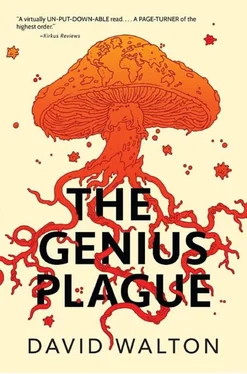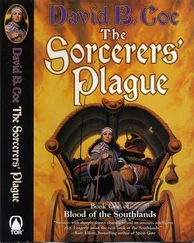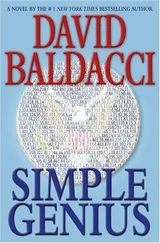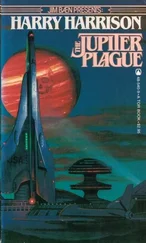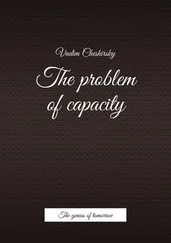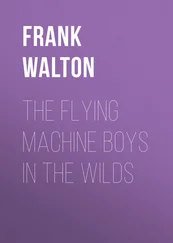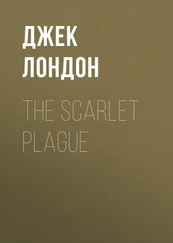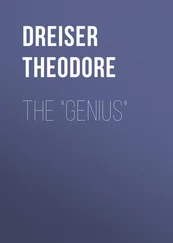And there were people. In the strange light, I hadn’t recognized them at first. They moved about us, in and out of the shelters, or else climbing the trees with unexpected ease. It was as if I had walked into a forgotten tribal village, though most people wore some amount of modern clothing. These were not indigenous Amazonians. They had to be the modern citizens of Venezuela, Brazil, Peru, Bolivia, and Colombia whom we had tracked as they migrated into the forest by the millions.
We reached a clearing of sorts—not so much the absence of foliage as a thinning of the overhead canopy. I could see patches of stars and thought that during the day sunlight probably reached the forest floor here more than elsewhere. I wondered why. Had the people intentionally cut back the trees? Or was there a reason the trees’ constant battle to claim the sun hadn’t continued here?
A dozen of the people around us approached, and Paul greeted them in Portuguese. There were women and men, young and old, even children among them. I could see now why they had blended so well into the forest. Patches of what looked like thick paint, or in some cases, moss, covered the skin of their faces and shoulders and arms. It was mostly shades of green, though I also saw streaks of white, black, brown, or even orange.
Paul introduced me to them, rattling off a set of names that I was too distracted to try to remember. They shook my hand and welcomed me, for all the world like we were hanging out together in a bar in Brasília. I looked at Paul, who was watching me, a smile dancing on his lips.
When the people continued on their way, he said, “It’s lichen.”
“Growing on their skin? I’m not surprised; living out here, there could be all kinds of weird infections.”
“No,” he said. “It’s intentional. Lichen is a composite organism. It’s actually composed of two different creatures—fungus and algae, in this case—living together in so tightly coupled a way that we refer to it as a single species. There are thousands of known lichen species, and they’re all made that way—a symbiotic relationship grown so close that two organisms become one.”
“Very educational,” I said. “But why is it on their faces ?”
“Another symbiotic relationship. Fungi, like animals, usually need to digest food from the environment to live. In combination with algae, however, it doesn’t need to. The algae’s photosynthesis captures enough energy for it and the fungus both.”
“So you’re saying…”
“Those people need to eat far less than you or I. They get a large part of their energy from the sun.”
I stared at him, incredulous. “I’m not an expert,” I said. “But I’m pretty sure we would have to change an awful lot about our metabolism for that to work.”
“It’s happening,” Paul said. “The fungus is making the changes, in our bodies, little by little. Neil, don’t you see what this means ? What if we didn’t have to grow food? There would be no such thing as starvation. Instead of burning oil by the gallon to fuel our food industry and move it all over the world, every person could get it efficiently, directly from the sun.”
“If it’s so great,” I said. “Why don’t you have it?” I hadn’t coughed in a while, and I was feeling a bit stronger, which frightened me. How long would it be until I started thinking like Paul?
“Oh, I will,” he said. “I haven’t been here nearly as long yet. It takes a while to grow.”
I looked around me at the community of people living here, and suddenly I didn’t see them as a crowd of humans anymore. I saw a fungus, its tendrils reaching for miles underground, up into all the trees, and through the minds and bodies of all the people around me. It was a single organism, wearing them all like puppets. Was I really talking to my brother right now? Or was I talking to it ?
“You’re not human anymore,” I said. “You can call it a ‘composite organism’ if you like, but you’re not the one in control. Can’t you see what’s happening? It’s turning you into its arms and feet and fingers, just extensions of itself.”
Paul reached a tree that looked rotted through, though it still stood tall. Conks and shelves and mushrooms riddled its bark. He sat down on one particularly large fungal shelf, which held his weight, and rested his head back into a depression in the decaying wood. To my horror, nearly invisible tendrils, which had been waving slightly in a current of air, settled onto the sides of his head and entwined themselves with his hair. But no, not his hair. Paul’s hair was brown, but mixed into it were whitish strands, no thicker than the others but curling outward. I hadn’t noticed them before now, but I had no doubt what they were. The hyphae of the fungal mycelium growing in his brain.
I should have been disgusted. I should have been running away to vomit on the forest floor. Instead, I felt a strange kind of detachment, and that scared me more than anything else. “Don’t do this, Paul,” I said. “Resist it. Dad managed to, at least for a while. If you’re still in there, fight back! You don’t have to let it tell you what to do or how to think. Leave with me, right now. We’ll go back to the States. We’ll figure this out together.”
“I’m not a slave,” he said. “You’re thinking of it all wrong. This is symbiosis, two species working together for the mutual good of both. It’s the engine of evolution.”
“I thought that was the survival of the fittest,” I said.
He clapped his hands. “And that’s where your thinking is wrong! Survival of the fittest has its place in evolution, sure, but it’s much more limited than the capitalist, competition-loving scientists of the West like to think. Our relationship with other species doesn’t have to be a battle. Symbiosis is a much more powerful agent of change, and a much more successful one. Look around you! It’s everywhere. Most of the creatures in this forest rely on other species to survive. You couldn’t survive without the thousands of bacteria dwelling inside you, helping you digest, producing vitamins, fighting off disease. This fungus isn’t a disease. It’s the next stage of human evolution. It’ll make us stronger, smarter, more efficient, better able to adapt and survive.”
“But we won’t be human. We won’t be us .”
“We’ll be something better,” he said. “And you’ll be with us. I can already see it starting to work in you.”
I put my hands on my face, afraid of what I might feel on my own skin. I did feel much stronger now, and my breath came easily.
“Did you know we’ve all but shut down cocaine production? Instead, we’ve developed more efficient growing techniques to increase the production of fruit, coffee, corn, and wheat. In a few years, we’ll have new strains of quinoa and other grains that double their nutritional value. In combination with the photosynthetic lichen, we’ll be able to support billions—all in totally renewable environments like this one.”
“What about art?” I asked. “What about music, sculpture, storytelling, gardening, etc.? Have those increased as well?”
He waved a hand dismissively. “I’m telling you, people are still people. Those things will still be done.”
“But what about now? Is creative expression on the rise? Are there new works of intense personal emotion? Or are you reducing the human experience to the most efficient spread of your fungal host?”
“It’s war time. Plenty of time later to—”
“Slaves are efficient,” I said. “Machines are efficient. Is that what you want?”
“Inefficiency is killing this planet,” Paul snapped.
I shook my head. “Inefficiency is imagination. It’s singing in the rain and vaudeville shows and sandcastles and whimsy and falling in love and yearning for our dreams to come true. Inefficiency is the best part of who we are.”
Читать дальше
